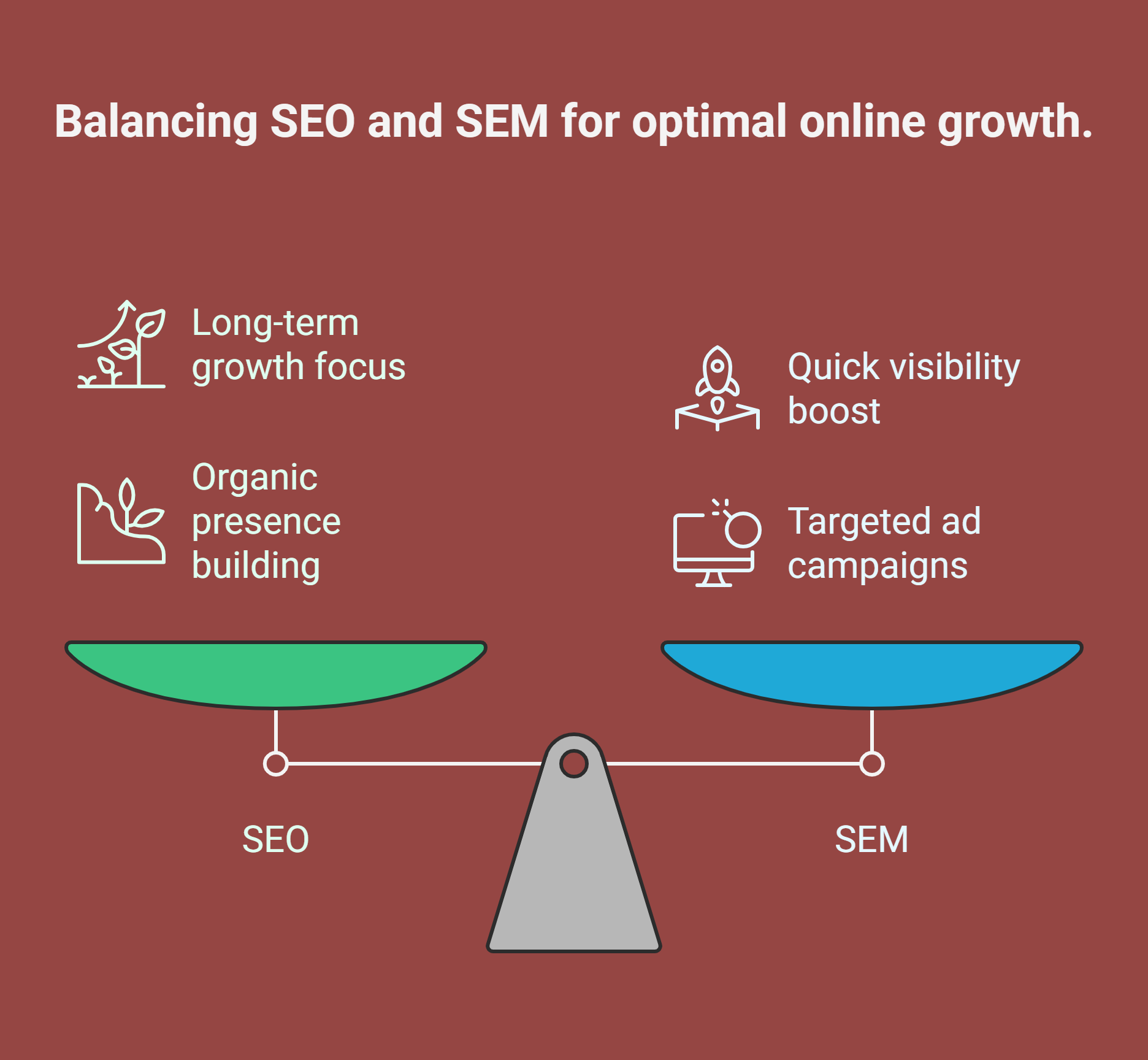Ever felt totally lost in the jumble of digital marketing jargon? SEO, SEM, CTR… it can feel like alphabet soup. Don’t worry—you’re definitely not alone. The good news? Once you break it down, it all starts to make sense—and it can seriously boost your online presence.
Think of it like this: you’ve got an amazing lemonade stand, and you want more people to find it. Putting up signs around town so people naturally discover it? That’s SEO. Paying for a big, bold billboard right on the highway to grab instant attention? That’s SEM.
Exploring a career in Digital Marketing? Apply Now!
What is SEO?
SEO stands for Search Engine Optimization. Imagine a librarian meticulously organizing a vast library. That’s essentially what SEO does for your website.
It's all about making your site attractive to search engines like Google. You do this by using the right keywords, having high-quality content, and making sure your site is easy to navigate. The higher you rank in search results, the more people will discover your online lemonade stand – organically, without paying for ads.
Think well-written blog posts, insightful articles, and a smooth user experience. These are the foundations of effective SEO. It’s a long-term strategy, like planting a tree and nurturing it to grow tall and strong.
What is SEM?
SEM stands for Search Engine Marketing. This is where we talk about paid advertising. With SEM, you’re essentially renting prime real estate on the search results page.
You bid on keywords related to your business, and your ads appear when people search for those terms. It’s like placing that eye-catching billboard right where your target audience will see it. Unlike SEO, with SEM, you pay for each click on your ad.
SEM can be a powerful way to get immediate visibility, especially for new businesses. It offers precise targeting options, letting you reach specific demographics and interests. It's like a turbo boost for your website traffic.
SEO vs. SEM: Working Together
While different, SEO and SEM are not mutually exclusive. In fact, they work best together, like a dynamic duo. Imagine a well-optimized website (thanks to SEO) combined with targeted ad campaigns (powered by SEM).

This synergistic approach can significantly amplify your online presence. You could use SEM to drive traffic for specific product promotions while continuing to build a strong organic presence through SEO. It's like having both the billboard and the street signs working in harmony.
Many businesses begin with SEM for a quick win while laying the groundwork for long-term SEO success. This allows them to gain initial visibility and build their brand while organically growing their online authority. It's a strategic balance that delivers sustainable growth.
Conclusion
Choosing the right strategy depends on your goals and budget. If you're aiming for long-term, sustainable growth and are willing to invest the time and effort, SEO is your go-to. If you need immediate visibility and have a budget for paid ads, SEM can deliver quick results.
Ultimately, a blended approach often yields the best outcomes, leveraging the strengths of both SEO and SEM. It’s like having a well-rounded marketing toolkit, ready to tackle any challenge and propel your online success.
Dreaming of a Digital Marketing Career? Start with Digital Marketing Certificate with Jobaaj Learnings.
















